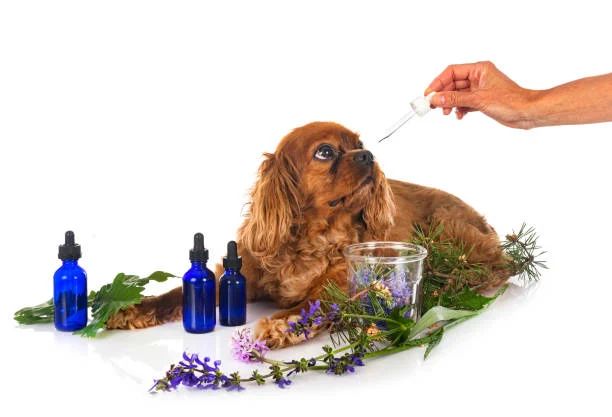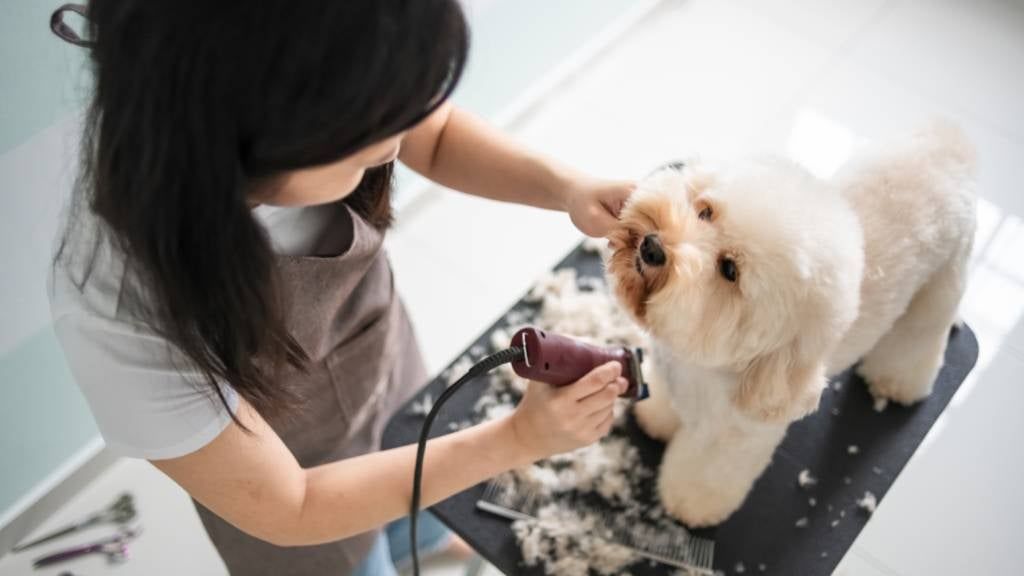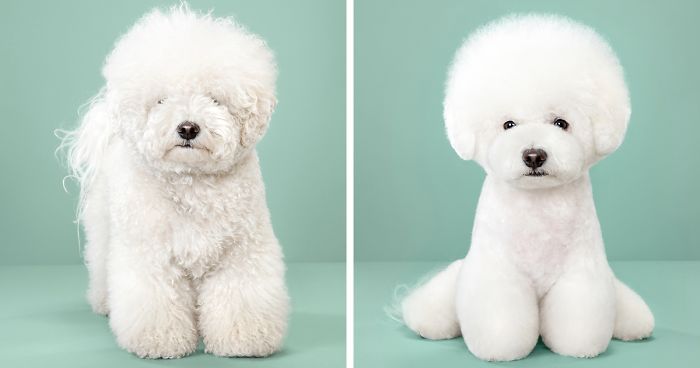Introduction
Dog grooming can be a significant expense for pet parents. In fact, the average dog owner spends over $250 on grooming per year according to the American Pet Products Association. But how much you actually spend can vary quite a bit based on your dog’s breed, coat type, age and other factors.
This article will cover the average costs of professional grooming services, DIY grooming supplies, additional services like teeth cleaning, as well as tips for saving money on grooming your dog. You’ll also learn what impacts your grooming costs and get estimates for yearly grooming budgets based on your dog’s needs.
Average Costs of Dog Grooming
Dog grooming can be an expensive endeavor for pet owners. The costs vary significantly based on whether professional grooming services are used or owners choose to groom their dogs at home.
For professional dog grooming at a salon or groomer, costs typically range from $30 to $90 per grooming session. The national average is around $50 per session. However, prices can vary widely based on the dog’s size, coat condition, and any extra services performed, like nail trimming or teeth cleaning.
DIY dog grooming at home is more affordable, with costs averaging $20 to $40 per grooming. Dog owners need to purchase grooming tools like clippers, brushes, nail trimmers, shampoo and dryers. These supplies can cost $30 to $200 up front. But they allow owners to groom their dogs as frequently as needed at a low cost over time.
On average, most dog owners spend $25 to $75 per grooming session whether they DIY or use a professional groomer. Small dogs generally cost less while large dogs with thick coats have higher grooming expenses.
Factors That Impact Grooming Costs
There are several key factors that influence how much dog owners can expect to spend on grooming their furry friend. The most significant factors are:
Dog Size
Larger dogs generally require more time, effort, and grooming products compared to smaller dogs. Large dogs like Great Danes or Saint Bernards have much more fur and surface area to cover during a grooming session. This often translates to higher costs. Small dogs like Chihuahuas require less time and fewer product amounts, leading to more affordable grooming costs.

Dog Breed
Certain dog breeds necessitate more intensive grooming needs. Breeds with continuously growing hair like Poodles, Shih Tzus, and Maltese need frequent haircuts and clipping to manage their long locks. Thick-coated breeds like Huskies and Chow Chows also require extensive brushing and de-shedding treatments. These specialized grooming requirements result in higher prices for these breeds.
Hair Length
The length and fullness of a dog’s hair impacts grooming costs. Dogs with short hair typically require only occasional trims, while dogs with long hair need regular haircuts to trim and style their long fur. Full, thick coats take more time to dry, detangle, and brush thoroughly. Hair length directly correlates to the time investment required by groomers.
Professional Grooming Services
Professional groomers offer a variety of services to keep dogs looking and feeling their best. Some of the most common professional grooming services include:
Full Service Grooming
A full service grooming typically includes bathing, brushing, nail trimming, ear cleaning, teeth brushing, haircutting, and styling. Full service appointments can take 2-3 hours for large dogs and 1-2 hours for small dogs. This comprehensive grooming addresses the dog’s overall hygiene and appearance.
Bath and Brush
For dogs that don’t need a haircut, a bath and brush service can freshen up their coat. The groomer will bathe the dog with dog-safe shampoo, rinse thoroughly, towel dry, brush out mats, and blow dry the coat. This maintenance grooming helps keep the coat clean between full grooming sessions.
Nail Trimming
Getting a dog’s nails trimmed by a professional helps prevent cracked or broken nails. The groomer will use clippers specifically designed for dogs to trim the nails to the proper length. Nails that are too long can snag and become painful or make walking difficult.
Teeth Cleaning
Veterinarians or groomers can clean a dog’s teeth to remove plaque and tartar buildup. A professional dog teeth cleaning is usually done under anesthesia and involves scaling and polishing the teeth. Regular teeth cleanings are important for preventing periodontal disease.
DIY Grooming Supplies
For dog owners looking to save money by grooming their pets at home, investing in quality DIY grooming supplies is essential. Some of the most important supplies for a do-it-yourself dog grooming kit include:
Shampoos and Conditioners
High-quality dog shampoos and conditioners designed specifically for your dog’s coat type go a long way in keeping their fur clean, soft, and tangle-free. Look for gentle formulations without harsh chemicals or fragrances. Expect to spend $10-30 on a good shampoo and conditioner set.
Brushes and Combs
Slicker brushes, bristle brushes, dematting combs and rakes all serve different purposes for grooming dog hair. Investing in the right brushes and combs for your dog’s coat will make regular brushing and de-shedding much easier. Quality pet brushes range from $10-30 each.
Clippers and Scissors
If you plan to cut your dog’s hair at home, especially for breeds with longer hair, investing in proper clippers designed for pets is crucial. High-quality clipper kits will include multiple attachments for different lengths. Grooming scissors specifically made for pets will be sharp and precise for trimming. Expect to pay $30-150 for clippers and $10-30 for scissors.
Nail Trimmers
Trimming your dog’s nails regularly is an important part of grooming. Nail trimmers made for dogs are a must-have, with prices ranging from $10-20. Look for trimmers with safety features to avoid cutting nails too short.
Additional Grooming Services

Beyond basic grooming, dogs can enjoy a variety of premium services. Two popular additional services are de-shedding treatments and cosmetic services like hair coloring or the application of dog-safe perfumes.
De-shedding treatments can provide relief for dogs and owners struggling with heavy shedding. Shedding is a natural process, but some dogs are prolific year-round shedders. Special de-shedding shampoos, conditioners, and tools can be used to loosen and remove large amounts of dead hair. This helps reduce shedding around the home. Some groomers offer de-shedding packages that bundle together several de-shedding products and techniques for maximum results.
Dog hair coloring is purely cosmetic but lets pet owners change their dog’s look with bright colors or even rainbow hues. Safe semipermanent dyes formulated for dogs are used. This service allows pet owners to get creative with their dog’s style. It’s commonly seen at major dog shows. Of course, normal grooming is still required as the vivid colors fade out over time.
Perfumes or colognes for dogs are also available. These scented products use dog-safe formulas that won’t irritate a dog’s skin. Lightly scented sprays or wipes let owners freshen up their pets. Heavily perfumed products are avoided as dogs have very sensitive noses. Scented products range from floral and sweet to musky or woodsy aromas. Owners enjoy making their dogs smell pleasant before a visit or walk.
Saving on Grooming Costs
There are a few ways dog owners can save money when it comes to grooming their pets.
One option is to do some of the grooming yourself at home. With some practice and patience, many owners find they can bathe their dogs, trim nails, clean ears, and brush coats regularly. Investing in some basic grooming tools like clippers, brushes, shampoo, and towels can save on professional grooming costs over time.
Another money-saving tactic is to extend the time between full professional grooming sessions. While every dog is different, many only need a full trim and groom every 6-8 weeks. Stretching this to every 10-12 weeks can cut down on grooming bills over the course of a year. In between full grooms, owners can brush the coat, bathe the dog, and tidy up nails and ears at home.

Finally, looking out for grooming discounts and sales can also lead to good savings. Many salons offer first-time customer discounts or packaged deals on multiple grooming sessions. Shopping these promotions and keeping an eye out for holiday sales events can help cut down the cost per visit. Some pet retailers also run periodic grooming sales on products and gift cards that can generate additional savings.
Premium Grooming Services
For pet owners looking to truly pamper their pups, many groomers offer premium spa packages and styling options.
Spa packages may include aromatherapy, blueberry facials, oatmeal baths, or hydrating masques to leave the dog’s skin and coat looking its best. These spa add-ons provide relaxation and hydration. Prices often start around $15-20 for a basic spa package.
Styling options allow pet owners to give their dog a fun new look. Common styling options include dyeing or chalking fur, Mohawk styles, temporary hair extensions, glitter, accessory bows, and pattern shaving. An all-over vibrant dye job generally costs $50-100 depending on the size of the dog. Pattern shaving costs around $15-30 per pattern.
Hot oil treatments deeply condition and add shine to a dog’s coat. Natural oils like coconut, jojoba, or olive oil are massaged into the fur and skin and then washed out. Hot oil treatments generally add $10-15 onto the cost of a grooming session.
While not necessary, premium services allow pet owners to pamper their pups. Prices vary based on the specific services, the groomer, and the size of the dog, but owners can expect to pay a premium.
Yearly Grooming Cost Estimates
The yearly cost of grooming a dog can vary significantly based on the dog’s size. Here are some estimates for small, medium, and large dog breeds:
Small Dogs
For small dog breeds like Chihuahuas, Yorkies, and Dachshunds, expect to spend an average of $300 to $500 per year on grooming. Small dogs generally require grooming every 6 to 8 weeks. At an average cost of $40 to $60 per grooming session, yearly costs for small dogs add up quickly.
Medium Dogs
Medium-sized dog breeds like Cocker Spaniels, Bulldogs, and Beagles need grooming every 4 to 6 weeks on average. With average grooming costs of $50 to $70 per session, expect to spend $350 to $550 yearly for grooming a medium dog.
Large Dogs
Large breeds like Golden Retrievers, German Shepherds, and Poodles require the most frequent grooming, about every 4 to 5 weeks. Their larger size also means grooming costs more per session, from $60 to $100 on average. For large dogs, plan on spending $500 to $1,000+ per year for professional grooming.
Conclusion
The cost of caring for your dog’s grooming needs depends greatly on many factors, such as the size and breed of dog as well as how often it needs fur-styling and other regular services. On average, professional grooming services start at around $40-60 per session for the basics like a bath and haircut. While some breeders prefer home grooming, this requires an initial investment of $50-300 for quality grooming tools and recurring costs of $10-50 monthly for shampoos and conditioners.

To save money, be sure to brush and bathe your dog at home between visits, compare rates of groomers in your area, and look for groomer deals and discounts. With regular grooming and care, your dog can enjoy good hygiene and a healthy, stylish coat for years to come. The investment is well worth it for a happy, handsome companion by your side.